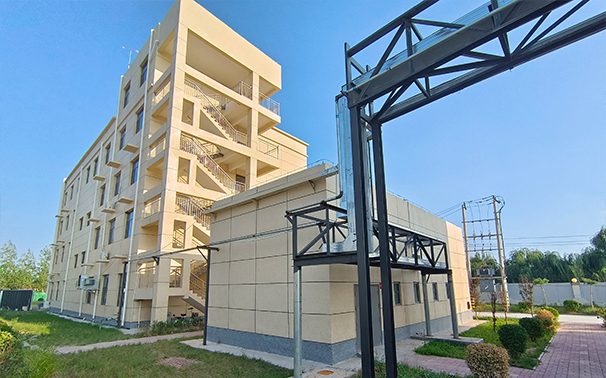Nonionic polyacrylamide applications and benefits in various industrial processes and research fields
Non-Ionic Polyacrylamide A Versatile Polymer in Modern Applications
Non-ionic polyacrylamide (NIPA) is a water-soluble polymer that has gained significant attention in various fields due to its unique properties and versatility. As a member of the polyacrylamide family, NIPA retains many of the advantageous characteristics of polyacrylamides, such as high molecular weight and excellent water retention abilities, but lacks ionic charges. This particular feature enhances its utility in a variety of applications, as it minimizes interactions with other ionic substances, thereby making it a valuable material in numerous sectors.
Structure and Properties
The chemical structure of non-ionic polyacrylamide consists of repeating units of acrylamide, which can polymerize to form long, chain-like molecules. The absence of ionic groups in its structure leads to specific properties that distinguish it from its ionic counterparts. Non-ionic polyacrylamide is known for its high solvency in aqueous solutions, superior thickening abilities, and excellent anti-agglomeration properties, which contribute to its effectiveness in numerous applications.
One of the key characteristics of NIPA is its ability to form hydrogels when used in conjunction with cross-linking agents. These hydrogels can absorb significant amounts of water and swell without dissolving, making them ideal for a wide range of applications including agriculture, pharmaceuticals, and personal care products.
Applications in Agriculture
In the agricultural sector, non-ionic polyacrylamide plays a crucial role in soil conditioning and erosion control. One of its primary uses is as a soil amendment that helps improve soil structure, aeration, and moisture retention. By enhancing the water-holding capacity of soil, NIPA helps to reduce irrigation needs and promotes healthier crop growth.
Moreover, NIPA can be employed as a flocculating agent in wastewater treatment to facilitate the removal of suspended solids. By aggregating particles, it allows for easier filtration and purification of water, thus contributing to sustainable agricultural practices.
Role in Industrial Processes
non ionic polyacrylamide

The industrial applications of non-ionic polyacrylamide are extensive. Its thickening and stabilizing properties make it valuable in the production of paints, coatings, and adhesives. The polymer’s ability to improve the viscosity of liquid formulations allows for better performance and application characteristics.
In the oil and gas industry, NIPA is used as a viscosifier in drilling fluids. The incorporation of NIPA in these fluids enhances their viscosity and stability, assisting in the efficient extraction of resources. This application is particularly advantageous in unconventional oil recovery processes, where maintaining the right fluid characteristics is essential for optimal extraction rates.
Applications in the Pharmaceutical and Personal Care Industries
The pharmaceutical industry has also found a myriad of uses for non-ionic polyacrylamide. Its ability to form hydrogels makes it an excellent candidate for drug delivery systems. These systems can control the release of pharmaceutical compounds, providing sustained therapeutic effects with minimal side effects.
In personal care products, NIPA serves as a thickening agent and film-forming agent. Its smooth texture enhances the sensory experience of lotions and creams, contributing to a desirable product consistency. Furthermore, NIPA’s biocompatibility aligns well with the growing demand for safe and effective cosmetic formulations.
Environmental Considerations and Future Perspectives
As the environmental consequences of synthetic polymers become increasingly scrutinized, the development of more eco-friendly alternatives is crucial. Non-ionic polyacrylamide is relatively more biodegradable than other synthetic polymers, which makes it a candidate for sustainable applications. Ongoing research into enhancing its biodegradability and minimizing environmental impact will undoubtedly contribute to its future in various industries.
In conclusion, non-ionic polyacrylamide stands out as a versatile polymer with a broad range of applications across agriculture, industry, pharmaceuticals, and personal care. Its unique properties allow for effective solutions to modern challenges, from improving soil health to enabling advanced drug delivery systems. As research and innovation continue to evolve, the potential of NIPA as a sustainable material is promising, paving the way for its expanded use in environmentally conscious applications and practices.
-
lk-319-special-scale-and-corrosion-inhibitor-for-steel-plants-advanced-solutions-for-industrial-water-systemsNewsAug.22,2025
-
flocculant-water-treatment-essential-chemical-solutions-for-purification-processesNewsAug.22,2025
-
isothiazolinones-versatile-microbial-control-agents-for-industrial-and-consumer-applicationsNewsAug.22,2025
-
scale-inhibitor-key-solutions-for-water-system-scale-preventionNewsAug.22,2025
-
organophosphonates-versatile-scale-inhibitors-for-industrial-water-systemsNewsAug.22,2025
-
scale-and-corrosion-inhibitor-essential-chemical-solutions-for-water-system-maintenanceNewsAug.22,2025





